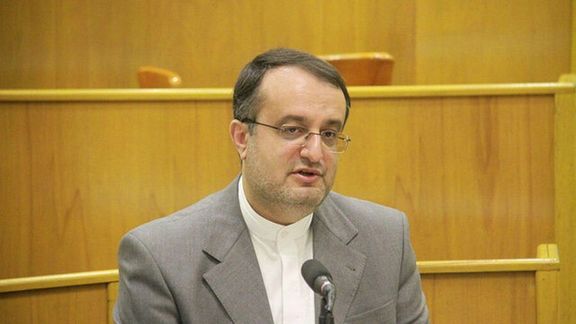Iran Says No IAEA Access To Camera Footage At Nuclear Site Without JCPOA

Tehran said Wednesday that before the 2015 nuclear deal is revived it will not give the IAEA access to data from cameras at a new centrifuge parts plant in Esfahan.

Tehran said Wednesday that before the 2015 nuclear deal is revived it will not give the IAEA access to data from cameras at a new centrifuge parts plant in Esfahan.
Mohammad Reza Ghaebi, Head of Iran's Permanent Mission to International Organizations in Vienna and acting ambassador to the International Atomic Energy Agency (IAEA) told reporters in Vienna that Iran would not provide access to the cameras installed by the agency in Esfahan if the 2015 nuclear deal, Joint Comprehensive Plan of Action (JCPOA) is not restored.
“That is why the agency has announced that it was unable to confirm whether or not the manufacturing of spare parts for centrifuges has begun in Esfahan,” Ghaebi noted.
The Esfahan site was built to replace the TESA Karaj Complex, a now decommissioned workshop in the west of the capital Tehran. The Karaj site was damaged in a June 2021 attack that Iran said Israel was responsible for. The IAEA has confirmed that the production of centrifuge rotor tubes and bellows at TESA Karaj Complex has stopped.
Ghaebi added that on April 4 Iran informed the IAEA that all the machines for production had been transferred from Karaj to Natanz and on the same day allowed the agency's inspectors verify the move and that the machines were not operating.
IAEA inspectors installed surveillance cameras at the Esfahan facility January 24 to ensure the machines intended for the production of centrifuge rotor tubes and bellows were under monitoring but the production of the parts there had not started.
Reuters reported on Wednesday that in a new confidential report to its member states, the IAEA has said that Iran moved all its machines making centrifuge parts from the workshop at Karaj to its Natanz site. The equipment, according to the report, remained under IAEA seal at Natanz and was not operational.
The report also said that Iran set up another site at Esfahan where the IAEA has also installed cameras but Iran has not given access to the data and recordings from these cameras.
“Without access to the data and recordings collected by these cameras, the agency is unable to confirm whether the production of centrifuge components at the workshop in Esfahan has begun,” the report to IAEA member states said according to Reuters.
In December 2020 the Iranian Parliament passed a law to mandate the Atomic Energy Organization of Iran (AEOI) mandating the government, if US sanctions against Iran were not lifted, to start 20 percent enrichment, install 1,000 advanced centrifuges, and produce at least 120 kg of highly enriched uranium (which is at least 20 percent) within two months of the bill’s approval.
The legislation also required reduction of IAEA monitoring to the to the level required by the Nuclear Non-Proliferation treaty (NPT). The agency had exercised greater access both under the JCPOA and Iran’s Additional Protocol to the NPT.
Under temporary agreements with the IAEA, Iran continues to keep footage from the agency's cameras instead of destroying them, as it had said it would, but does not provide them to the IAEA.